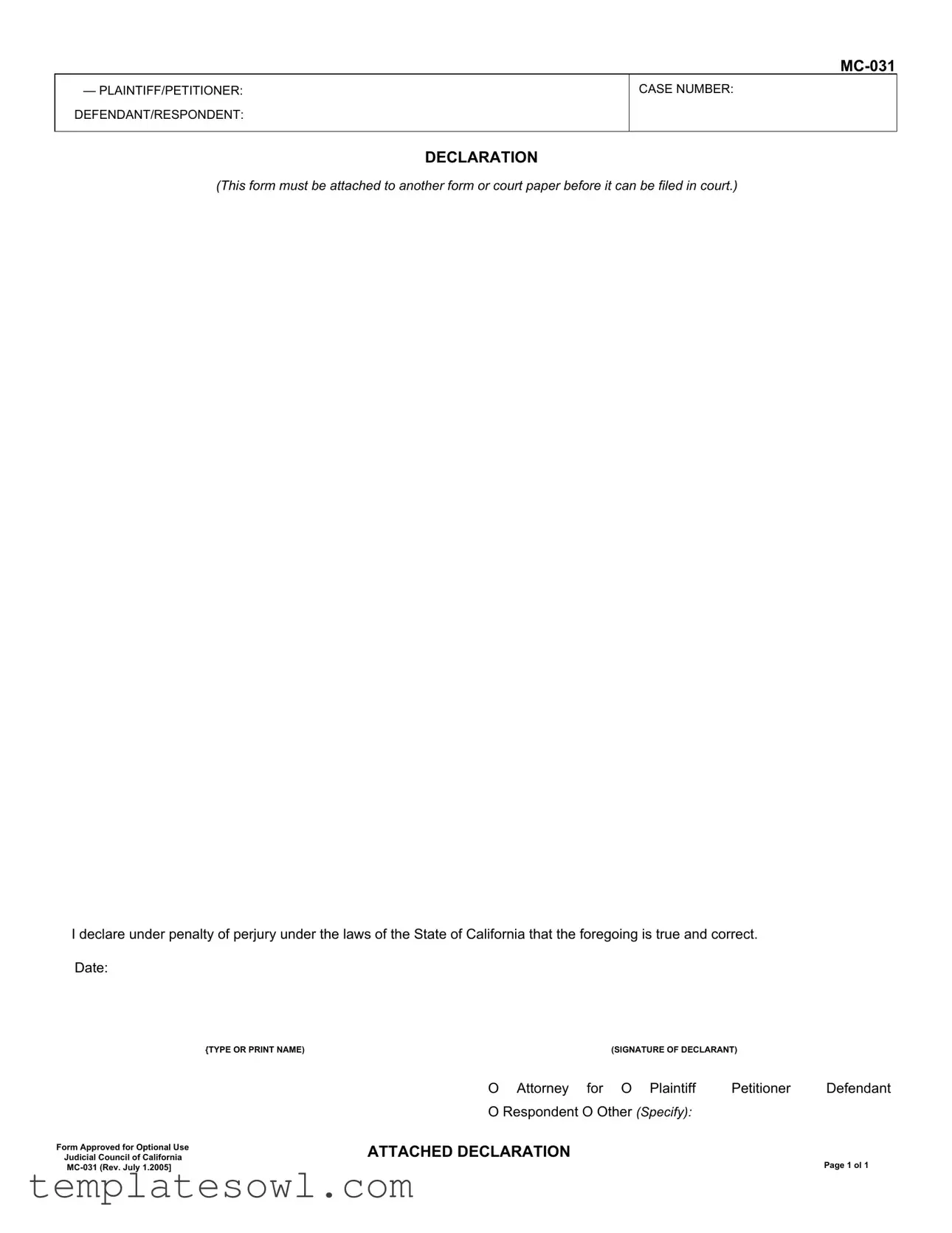What is the MC-031 Declaration CA form?
The MC-031 Declaration CA form is a legal document used in California courts. It serves as a declaration, or a formal statement, made under penalty of perjury. This means that when you sign it, you are affirming that the information you provide is true to the best of your knowledge. However, this form cannot stand alone; it must be attached to another form or court document before it can be filed with the court.
Who can use the MC-031 Declaration CA form?
This form can be utilized by various parties involved in a court case, including plaintiffs and defendants. It is also available for use by attorneys representing either side. The flexibility of this document makes it appropriate for anyone who needs to provide a sworn statement in support of a motion, petition, or any other court filing.
What information do I need to provide on the MC-031 Declaration CA form?
You must include your name, whether you are acting as a plaintiff, petitioner, defendant, or respondent, and your case number. It's crucial that the information is accurate, as you are declaring it under penalty of perjury. Additionally, there’s a section for your signature and the date, which solidifies your commitment to the truthfulness of the declaration.
Is there a specific format for filling out the MC-031 Declaration CA form?
The form itself is straightforward. You will need to type or print your name clearly in the specified area. After that, you’ll sign the document in the signature section. If you have an attorney, they may also indicate their representation. Ensure that you follow all instructions provided on the form to avoid any complications during the filing process.
Where should I file the MC-031 Declaration CA form after completing it?
After filling out the MC-031 Declaration CA form, you should attach it to the relevant court document you are submitting. This attachment often takes place during the filing process at the courthouse. Therefore, make sure to check with your local court for any specific filing procedures or requirements that may be in place.

